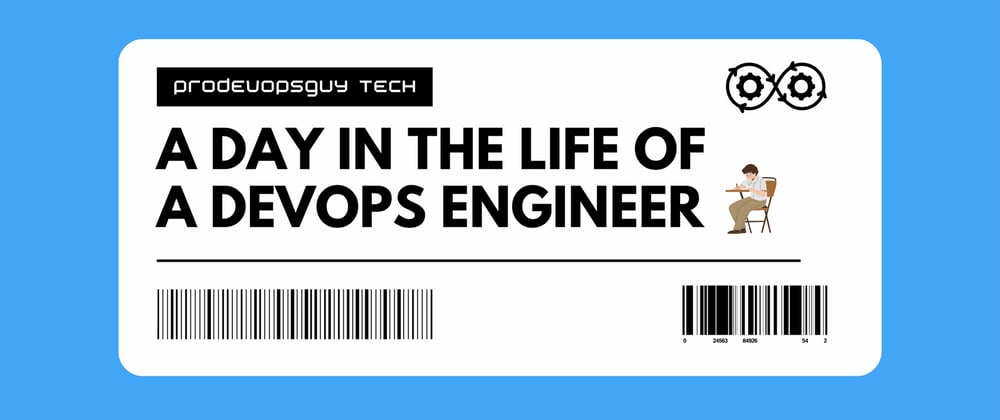A Day in the Life of a DevOps Engineer: Real-Time Challenges and Solutions
 Harendra Barot
Harendra Barot
Meet Aryan, a skilled DevOps engineer working at a mid-sized tech firm called TechNova. Each day for Aryan starts early, with a strong cup of coffee as he settles into his home workspace. The soft hum of his dual-monitor setup fills the room as he checks his emails and overnight alerts from their monitoring systems.
Morning Check-In: The Pulse of Operations
Aryan’s first task is a health check of the infrastructure. This involves scanning dashboards from tools like AWS CloudWatch and Datadog. Today, as Aryan sips his coffee, he notices an alert: one of their EC2 instances, hosting a microservice, has been running at unusually high CPU utilization overnight.
Problem Encountered: The spike in CPU usage could mean anything from a surge in user activity to a bug in the code causing an infinite loop.
Immediate Action: Aryan jumps into action, checking logs aggregated in ELK Stack (Elasticsearch, Logstash, and Kibana) to trace the root cause. He identifies a recent code deployment that introduced inefficient database queries. Aryan quickly contacts the development team, and they discuss a rollback strategy on a group chat.
Collaborative Problem-Solving: The Rollback Dance
After a brief virtual stand-up meeting with the DevOps and development teams, Aryan coordinates the rollback using Git and Jenkins. He triggers an automated pipeline to revert to the previous stable build. The pipeline runs through stages like code checkout, build, and testing before deploying to the affected environment.
Real-Time Insight: During the rollback, Aryan realizes the database schema also needs reverting. He consults the database engineer and plans a synchronized rollback of both the code and the database.
Outcome: The rollback completes, CPU usage stabilizes, and Aryan updates the incident report in Jira for tracking. He logs lessons learned, emphasizing the need for better integration testing to catch such issues earlier.
Mid-Day: Continuous Improvement and Automating Tasks
With the incident resolved, Aryan shifts gears to work on automation tasks. Today, he’s enhancing their CI/CD pipeline to include security scans using Snyk for vulnerabilities. The goal is to catch security issues before code even reaches production.
Example Problem: A month ago, Aryan faced a security breach when a dependency in one of their microservices was compromised. The incident taught him to prioritize embedding security into every step of the DevOps pipeline. This time, he makes sure to set up automatic alerts that notify both DevOps and development teams if vulnerabilities are detected.
Afternoon Checkpoint: Deployment Preparations
Aryan has a meeting scheduled with the development team to review an upcoming deployment. The conversation focuses on new containerized features using Docker and Kubernetes. They discuss load balancing strategies, how to ensure smooth scaling, and setting up readiness probes to avoid any downtime.
Real-Time Problem: Aryan recalls a painful incident when a deployment failed due to a missing readiness probe, causing Kubernetes to mark healthy containers as "unready" and triggering a service outage. This time, he ensures that their deployment YAML file includes robust readiness and liveness checks.
Example Deployment Plan: Aryan explains how they’ll use Helm charts to manage Kubernetes applications, making the deployment predictable and reproducible. He runs through a checklist, ensuring the configuration is properly versioned in their GitOps setup with ArgoCD.
Evening: Monitoring, Reporting, and Learning
As the day winds down, Aryan checks real-time metrics on their monitoring dashboards. All is green, signaling a successful day. He schedules automated scripts to run during the night that will patch minor updates to their system without downtime.
End-of-Day Learning: Aryan takes 15 minutes to read through articles or DevOps blogs. Continuous learning is key for Aryan, so he jots down ideas for container optimization and improving deployment speed, inspired by a case study he read.
Reflection: Aryan smiles as he thinks about the day's challenges and victories. It’s never just about fixing what’s broken; it's about building a resilient, self-sustaining system that can handle the unexpected. As the office lights dim, he logs out with a sense of accomplishment, ready to face whatever tomorrow might bring.
Summary:
This article follows Aryan, a DevOps engineer at a mid-sized tech firm, as he navigates a typical day filled with monitoring, problem-solving, and automation. It showcases the challenges he faces, including responding to system alerts, coordinating with the development team, rolling back deployments, enhancing security in CI/CD pipelines, and continuously learning.
The story also emphasizes that the role of a DevOps engineer varies day by day, with different scenarios bringing unique tasks and opportunities for growth.
Disclaimer:
This narrative is a fictional representation created to illustrate the day-to-day tasks of a DevOps engineer and the kinds of real-time challenges they might face. It should not be taken as an exhaustive guide or a depiction of every DevOps engineer’s experience. The scenarios mentioned are based on commonly known practices and challenges in the tech industry.
Subscribe to my newsletter
Read articles from Harendra Barot directly inside your inbox. Subscribe to the newsletter, and don't miss out.
Written by

Harendra Barot
Harendra Barot
I'm an IT professional and business analyst, sharing my day-to-day troubleshooting challenges to help others gain practical experience while exploring the latest technology trends and DevOps practices. My goal is to create a space for exchanging ideas, discussing solutions, and staying updated with evolving tech practices.